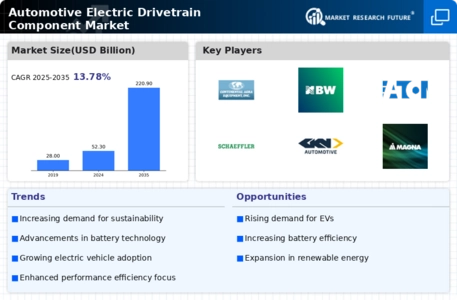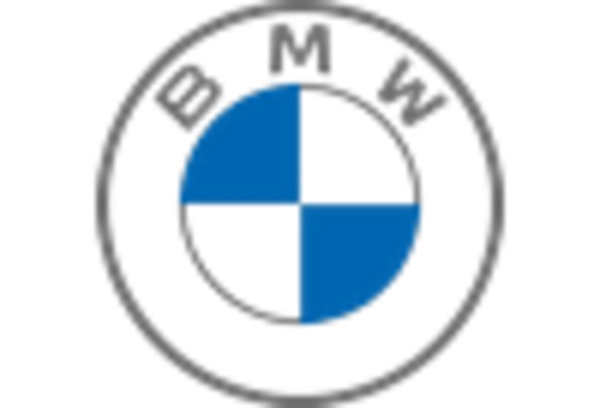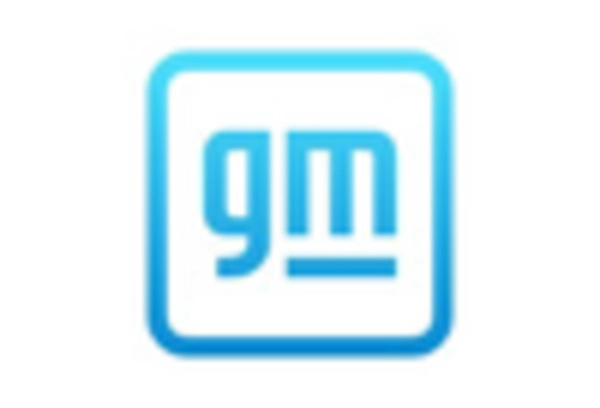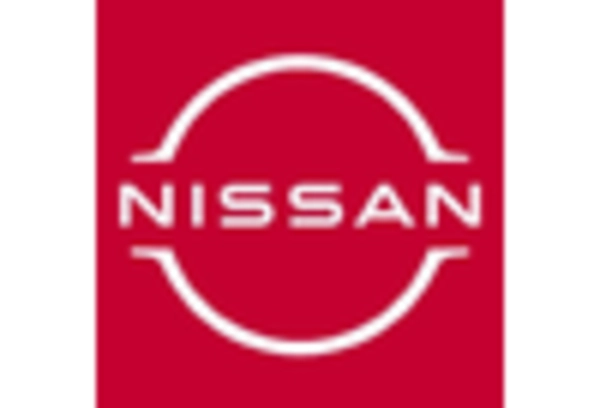Investment in Charging Infrastructure
The expansion of charging infrastructure is a critical driver for the Automotive Electric Drivetrain Component Market. As more charging stations become available, the convenience of owning electric vehicles increases, thereby encouraging consumer adoption. Investments from both public and private sectors are facilitating the development of fast-charging networks, which are essential for long-distance travel. Recent reports indicate that the number of charging stations is expected to triple by 2030, significantly enhancing the viability of electric vehicles. This infrastructure growth is likely to stimulate demand for electric drivetrains, as consumers feel more confident in the practicality of electric vehicle ownership.
Regulatory Support for Electric Vehicles
The Automotive Electric Drivetrain Component Market benefits significantly from regulatory support aimed at reducing carbon emissions. Governments worldwide are implementing stringent emissions standards and providing incentives for electric vehicle adoption. This regulatory landscape encourages manufacturers to invest in electric drivetrain technologies. For example, in several regions, tax credits and rebates for electric vehicle purchases have stimulated market growth. As a result, the demand for electric drivetrains is expected to rise, with projections indicating that electric vehicle sales could reach 30% of total vehicle sales by 2030, further propelling the Automotive Electric Drivetrain Component Market.
Collaborative Efforts Among Industry Players
Collaborative efforts among automotive manufacturers, technology firms, and research institutions are shaping the Automotive Electric Drivetrain Component Market. These partnerships are fostering innovation and accelerating the development of advanced electric drivetrains. By pooling resources and expertise, companies can address challenges related to performance, cost, and scalability. For instance, joint ventures focused on battery technology are yielding breakthroughs that enhance energy density and reduce costs. As a result, the Automotive Electric Drivetrain Component Market is likely to benefit from these collaborations, leading to more competitive products and a broader range of options for consumers.
Consumer Demand for Sustainable Transportation
There is a notable shift in consumer preferences towards sustainable transportation solutions, which is positively impacting the Automotive Electric Drivetrain Component Market. As awareness of environmental issues grows, consumers are increasingly seeking electric vehicles as a viable alternative to traditional combustion engines. This trend is reflected in market data, which shows that electric vehicle sales have doubled in recent years. The rising demand for eco-friendly vehicles is prompting manufacturers to enhance their electric drivetrains, focusing on efficiency and sustainability. Consequently, the Automotive Electric Drivetrain Component Market is poised for substantial growth as manufacturers align their offerings with consumer expectations.
Technological Innovations in Electric Drivetrains
The Automotive Electric Drivetrain Component Market is experiencing a surge in technological innovations, particularly in battery management systems and electric motor designs. These advancements enhance efficiency and performance, making electric vehicles more appealing to consumers. For instance, the integration of advanced materials in electric motors has led to weight reductions and improved thermal management. According to recent data, the market for electric drivetrains is projected to grow at a compound annual growth rate of over 20% through the next decade. This growth is driven by the increasing demand for high-performance electric vehicles, which necessitates the development of cutting-edge drivetrain components.


















Leave a Comment